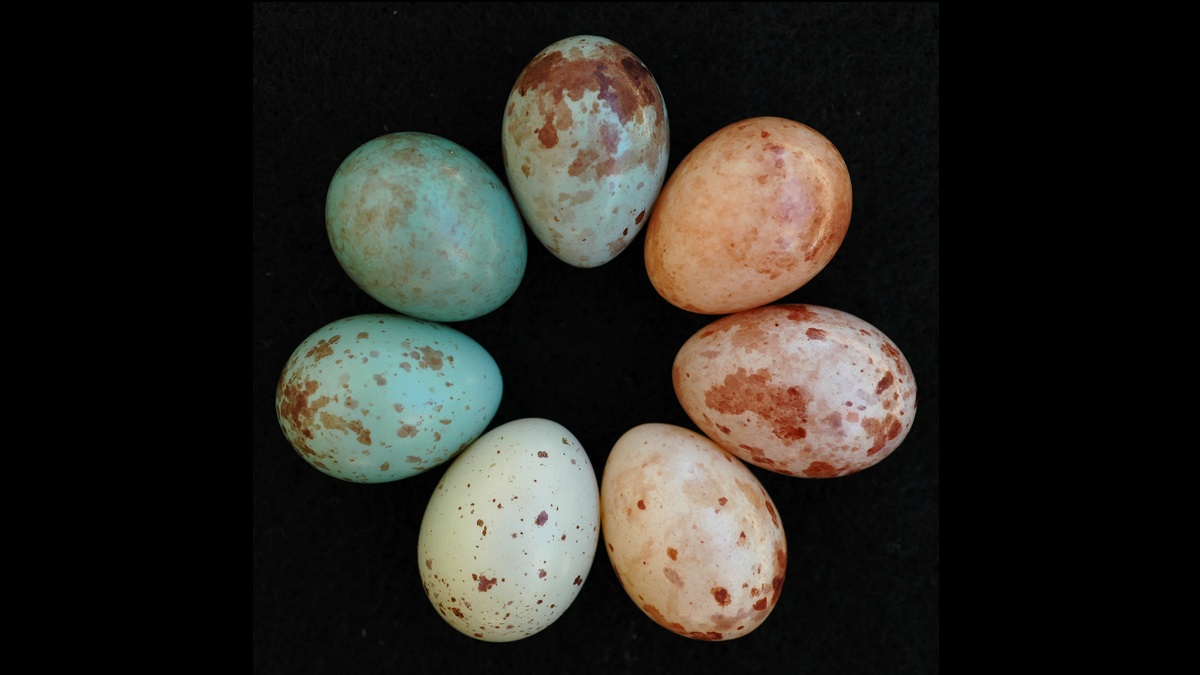Perhaps there are now eggs of three species - robin, starling and cuckoo.
Starlings do attempt to take over others birds' nests, see European Starling Life History
Starlings often take over the nests of native birds, expelling the occupants.
Optics Mag also says
However, [starlings] are invasive and can take over other birds’ nests and even kill them.
Cuckoos simply lay their egg, and when it hatches, their chick expels the others. The RSPB says
When a female cuckoo finds a suitable nest, and the hosts aren’t looking, she removes one of their eggs and lays her own egg in its place. Cuckoo young hatch after just 12 days, and push the hosts’ eggs or babies out of the nest, allowing it to eat all food brought by the host bird.
Identifying the three similar eggs, the two smaller ones are probably robin and starling. Optics Mag has this picture, which shows that starling eggs are larger and paler than the robin's egg. So the egg at the top of the OP's nest would be starling, with robin on the left.

The cuckoo egg is usually larger than the host's eggs, and is often mottled, such as the selection shown below, from Cosmos magazine. The cuckoo evolves its mimicry according to the other species in its habitat. Its egg will be the one on the right of the OP's photo.



